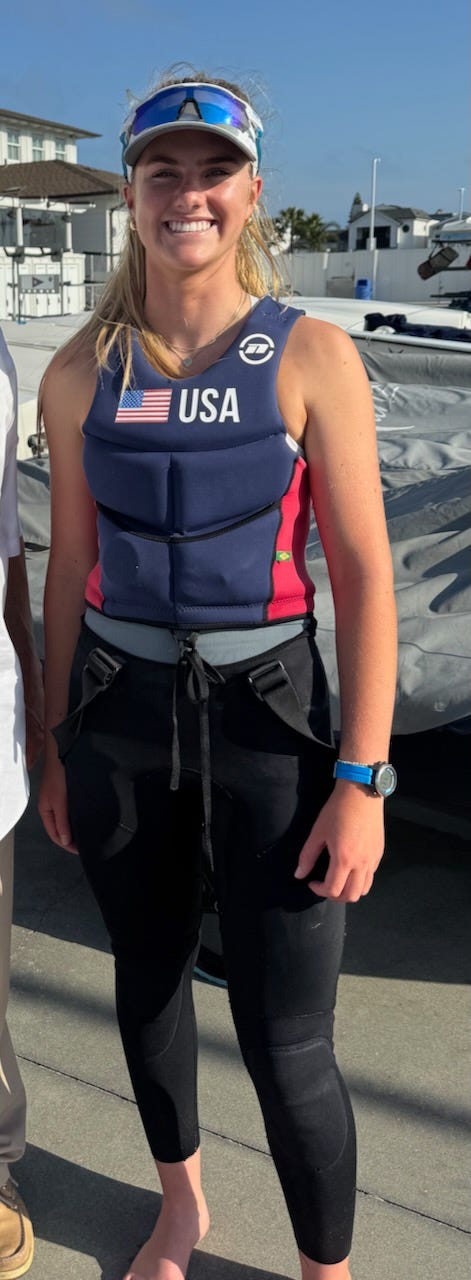What's The Catch?
Catch me, Paloma Arrigo, in my sailing and water polo adventures. Join me for exclusive content.
So here’s “The Catch.” It’s a special sailing and water polo phrase describing something top competitors in both sports strive to achieve by perfecting their finesse through hard work and regular training.
The Catch in Sailing
In sailing, "the catch" is a racing technique used when tacking; it involves easing the jib sheet to increase its drive and reduce its healing force while encouraging the boat to round up and, depending on wind velocity, backing the jib to help the boat come across the eye of the wind and ultimately tack, while keeping the main sheet relatively tight.
The boat is mostly steered through the tack by the balance and the heel of the boat to minimize rudder angle and maintain speed through the tack
Ideally in a dinghy, particularly in light air, you can gain speed through the tack, rather than losing speed.
“Easing the Jibsheet. This will increase the jib’s drive while reducing its healing force, shifting the center of effort aft in the boat, with more pressure on the mainsheet, which will increase the suction on the lee side of the main (its “power”), increasing both its drive and healing force. The change in heeling forces nearly cancels, resulting in a net increase in the forward drive from both sails. The catch is that the main is “headed” less, increasing the tendency to stall. There will also be an increase in weather helm due to the center of effort moving aft.
The Catch in Water Polo
In water polo, "the catch" refers to the act of a player successfully receiving the ball thrown by a teammate, usually by extending their hand out in front of them and softly guiding the ball into their palm, ensuring they maintain control while staying afloat in the water; only one hand can be used to catch the ball, except for the goalie who can use both hands.
Key points about catching in water polo:
One-handed catch: Field players must catch the ball with only one hand.
Soft landing: The goal is to catch the ball with a soft touch to prevent losing control.
Hand positioning: To facilitate a smooth catch, players should position their hands slightly in front and face your shoulders towards the incoming pass.



